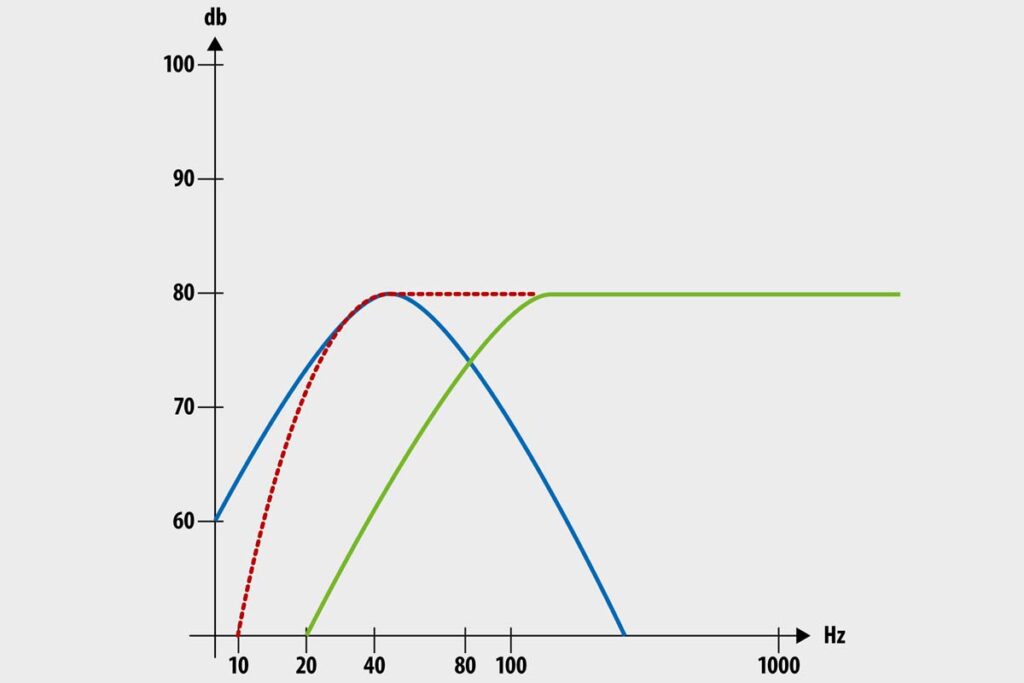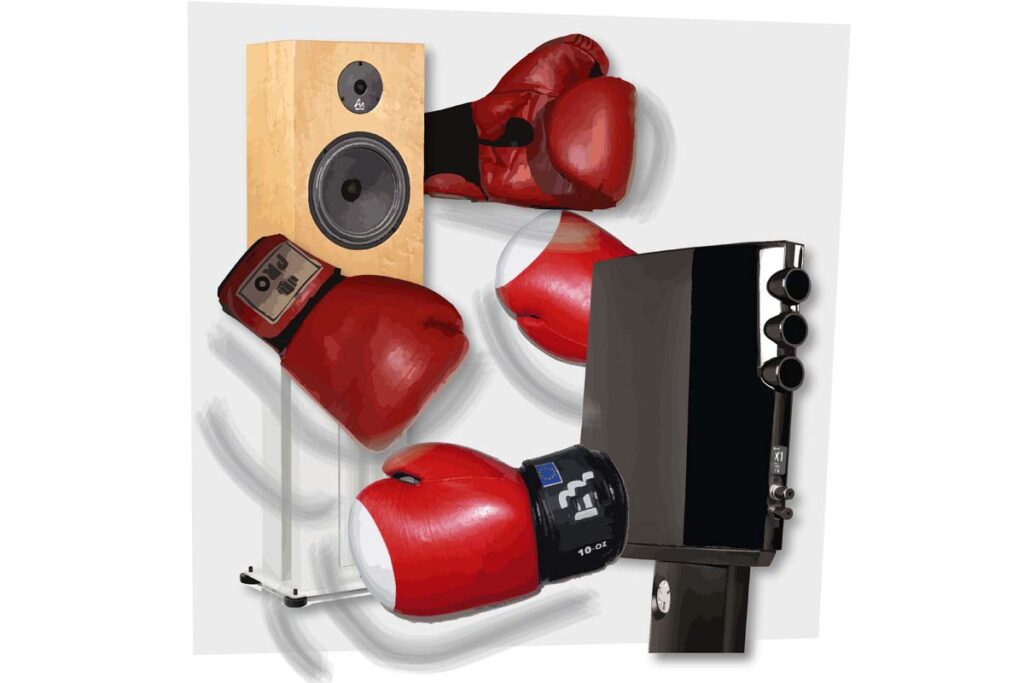A bass reflex port comes surprisingly close to the “free lunch” that we all know doesn’t exist in engineering: simply drill a hole in the cabinet and lo and behold! The speaker digs deeper. Of course, it’s not quite that simple – and when the room comes into play, the ostensibly inferior concept of the sealed box loudspeaker offers unexpected advantages.
To judge the pros and cons of ported versus sealed box loudspeakers, it is helpful to understand how the speaker and room interact, and this calls for a closer look at the mechanics of bass reproduction in the loudspeaker. The voice coil moving a diaphragm to generate sound waves in the room is only half of the equation in the bass range, because – keyword oscillation – the diaphragm-voicecoil assembly forms a spring-mass-system and therefore comes with a natural frequency at which it’s particularly eager to vibrate. The spring stiffness results not only from the rigidity of the suspension, but also from the volume of air enclosed in the speaker cabinet, which also acts like a spring: The smaller the volume, the greater the pressure differential to the outside for a given driver excursion; in other words, the firmer the air cushion that controls driver movement. The fact that the natural frequency increases in proportion to the spring stiffness while decreasing in proportion to the suspended mass is one of the reasons why bass drivers are large and often have massive, four-layer copper voice coils. It also helps understand why large enclosures enable lower cutoff frequencies: A greater enclosed air volume will push back against driver excursion with less force, causing the reciprocating mass to oscillate more slowly, i.e. at a lower frequency. The driver works efficiently down to this resonance frequency. Below that, the air volume increasingly works against the driver rather than with it, causing the sound level to drop by 12 decibels/octave.
As many music lovers have limited patience with refrigerator-sized loudspeakers, developers have been looking for ways to tickle deep bass from smaller enclosures and eventually came up with the bass reflex principle, which is the dominant design approach today. If you take an airtight container and connect it to the outside air via a duct, you get a Helmholtz resonator. An example of one that everyone has held in their hands is an empty bottle: the ratio of the air mass in the neck of the bottle to the volume of its body determines the pitch at which it hums when you blow across its opening. A bass reflex cabinet works on exactly the same principle; we can imagine the port as a bottleneck turned inwards.
But how does this help us achieve deeper bass? By using this resonance to help the driver out below its comfort zone. With a little design skill, the cabinet volume, bass reflex port and bass driver can be tuned in relation to each other in such a way that the frequency response is boosted below the resonance of the driver in the cabinet, extending it downwards in a linear fashion – bonus bass, achieved with just a little air and brainpower.
However, as the “free lunch” mentioned at the beginning does not actually exist, this trick also comes with some drawbacks; the one relevant to our topic arises logically from the principle itself: the level of the bass reflex resonance drops off to both sides of the tuning frequency at 12 decibels/octave – this makes it possible to combine the bass drop-off of the driver with the rise towards the port resonance to form a smooth transfer function. Below the tuning frequency, the filter slopes also combine – but now we don’t have one falling and one rising slope resulting in a flat response, but two falling slopes which add up to one that’s twice as steep. As a result, the output of a bass reflex loudspeaker drops by 24 decibels/octave below its cut-off frequency.

And that finally brings us to the interaction with the room, which has a significant influence on bass reproduction. Here we are primarily interested in the “room gain”, a pressure chamber effect that occurs below the frequency whose wavelength corresponds to twice the length of the room (in a typical living room around 30-40 Hz). Below this pitch, the level theoretically rises at 12 dB/oct. – i.e. with exactly the same slope with which a sealed box loudspeaker “loses” bass towards the bottom. Since our living rooms are neither perfectly reverberant nor airtight, the increase is less in practice, but this can be compensated for via boundary amplification by placing the speakers close to the wall. Of course, in real life everything is much more complicated than two simple formulas can express, but in principle it is relatively easy to advantageously combine the bass reproduction of sealed speakers with room gain to achieve a decently deep and, above all, controlled low end. This is much trickier with bass reflex loudspeakers, as they often work linearly down to below the room frequency, then drop off much steeper than the pressure chamber effect can compensate for. Especially if you don’t need to fill a very large room with sound, you may want to resist the temptation of the impressively low spec sheet bass response of a bass reflex speaker and consider a sealed box model instead – there’s a good chance it will suit your room a lot better.


